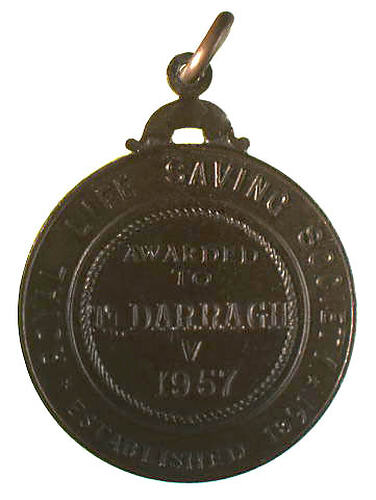The Royal Life Saving Society is a a non-profit, volunteer community service organisation. It was founded in England in 1891 to combat the high deathrate from drowning. The techniques advocated by the Society soon spread to other countries, and and today the RLSS is the largest single organisation dedicated to the teaching of lifesaving and the prevention of drowning.
The first Australian branch of the RLSS was formed in New South Wales in 1894, and it soon spread to the other states. In December 1924 a dual system of lifesaving was established, with Surf Life Saving Australia being responsible for ocean beaches and the Royal Life Saving Society Australia responsible for all other waterways.
In the following years the Society focused on water safety education and rescue training for inland areas, with a particular focus on school children. In the immediate pre-and post-World War II era the Bronze Medallion became included in many secondary school physical education programs. At that time the Society's training manual was still imported directly from the United Kingdom and was heavily orientated to a military drill-type approach. In the early 1950s a group of physical educationalists, led by George Turnbull and Frank Henry of the New South Wales Branch, started developing techniques that were specific to Australian conditions, this resulted in the first Australian Life Saving Manual published in 1953. It also ultimately led to an important international change in 1959 with the establishment of the Australian National Branch and the RLSS Commonwealth Society. By 1960 water safety and lifesaving programs were being used in most Australian schools.
In the late 1970s the longest period of the growth of the RLSS began, with the help of a group of Victorian educationalists. Until that time no national water safety education program existed, and the educationalists recognised that if they could provide a well-balanced and easy-to-follow water safety program, it would be readily accepted by swimming and school teachers nationwide. After trialling a program in a number of States and Territories, the Society launched the 'Swim & Survive' program in 1982. The program resulted in over one million awards being taken in two years. The RLSS also launched the first edition of 'Swimming and Lifesaving - The Manual'. During the 1990s it developed a world-class lifeguarding program, particularly for pools. The Pool Lifeguard Program is now widely recognised as the qualification for those supervising inland waters.
Today, the RLSSA operates as Australia's leading water safety educator, a non-profit, volunteer community service organisation with a branch in every State and Territory of Australia conducting courses in water safety, lifesaving, resuscitation and lifeguarding. Over one million Australian's undertake a Royal Life Saving course or program every year, and over five million Australians have achieved their Bronze Medallion since its inception.
The Society awarded a bronze medal to Tom Darragh in 1957 for skill in lifesaving and swimming (NU 34529).
References:
Royal Lifesaving Society of Australia website http://www.royallifesaving.com.au/extra.asp?id=8&OrgID=2.
More Information
-
Keywords
-
Localities
-
Authors
-
Article types
